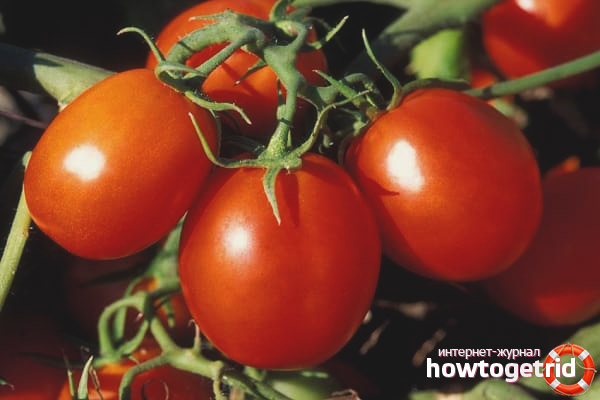The content of the article
The hard worker tomato should be interesting, first of all, to gardeners of the Urals and the Far East. Bred by Siberian breeders, it is zoned specifically for those places, it is characterized by excellent climate resistance with sharp changes in temperature during the summer season and with rainy weather.
Brief description of the variety
The Hard worker variety is of the determinant type, its plants do not stretch upward, but stop their vertical growth after they have the first two flower-bearing brushes - on average, at a height of about 1.2 meters. This allows you to pour well even late fruits. Fruit brushes usually include up to 6 berries.
Each bush brings an average of up to 6 kg of fruits that ripen 100-110 days after the appearance of the first seedlings.
Description of fruits of the Hard Worker variety
Hardworking tomatoes can be removed from the bushes until full ripeness, they ripen perfectly in the room without any loss of taste and marketability. It’s best to keep them in wooden crates in a cool dark place. The fruits are characterized by excellent keeping quality; gardeners can easily store and transport even very ripe berries without loss of quality.
Used Hardworking tomatoes are very versatile. In raw form, they are perfectly included in summer salads and a variety of vegetable dishes. For all that, the fruits of the variety perfectly complement the dishes that undergo heat treatment. The berries are easily preserved in their entirety, and they are dried and cooked in the form of juices and tomato paste.
Features of agricultural technology
Hardworking tomatoes are grown in seedlings.
- Germinate seeds for seedlings about 2 months before planting in the ground. For seedlings use containers with fertile soil, usually a mixture of garden soil with humus or peat. To maintain heat and humidity, planting is covered with a film.
- When the first loops of a plant hatch, seedlings need good lighting.
- After the first pair of true leaves appears, the tomatoes dive, moving to larger containers. So that the plants do not stretch upwards, but form a strong trunk, it is periodically recommended to conduct hardening of seedlings, lowering the room temperature.
Hardworking tomatoes grow well both in open beds and in greenhouses. Seedlings are planted in open ground after spring frosts pass, and in greenhouses in early May. Although the plants themselves stop their growth upward, in order to improve the yield indicators, they must be stepsoned, removing the extra sprouts from the axils of the leaves. Usually, bushes are formed, leaving in each 2-3 full-fledged stems from stepsons of the lower tier. A large number of fruits makes the garter of plants necessary. Trellis is used for this, and in greenhouses - elements of its construction. The first garter is carried out under the lower brush and then - as the bush grows.
Mineral complex fertilizers and nitrogen-containing mixtures are well suited for feeding tomatoes (you can use nitrofos, nitroammophos).After the beginning of the flowering phase, they switch to potash-phosphorus fertilizers. It is important to remember that tomatoes of this variety do not tolerate fresh organic fertilizers at all. In periods without precipitation, tomatoes need to be irrigated at least once a week.
Mulching with hay or sawdust is very good for bush growth, especially in regions with a hot climate - mulch prevents drying of the soil and is an additional organic fertilizer. Other measures to care for the plantation include loosening the soil and regular weed control. The variety requires protection from the main diseases of nightshade. Also, plants must be treated against pests.
The opinion of gardeners
Reviews about the grade Hard worker are good. Gardeners say that he fully lives up to his name - low compact bushes give an excellent harvest. Many respondents note that the hard-working berries canned berries look very elegant, because they are not large, neat and all the same size.
Tomatoes of the Hard worker variety can be a successful acquisition for both amateur gardeners and professional farmers. These tomatoes are very unpretentious in leaving, at the same time they give a high crop of fruits of excellent taste, perfectly preserving commodity qualities during storage and transportation.
Video: Tomato Care - The First Important Steps










Submit